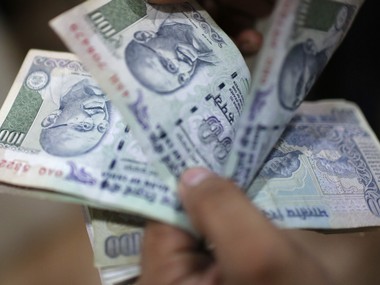If you throw a pebble in a pond, the impact of the stone breaking the equilibrium of the surface of the water causes ripples to spread outwards before they ebb completely. Financial markets are like the proverbial pond and adverse news represents the pebble. In our case, Infrastructure Leasing and Financial Services (IL&FS) is the pebble. We endeavour to assess how long and how far the ripples will pan out before they ebb. We examine the issue in a 3D manner. Indian banks derive twin track revenues – fund-based (borrowing and lending) and non-fund based (distribution of financial products, service charges, etc). There has been a concerted effort by the lending institutions to focus on non-fund (fee) based income as it is relatively safer and assures rapid profitability. [caption id=“attachment_5502681” align=“alignleft” width=“380”]  Representational image. Reuters[/caption] In the present day and age, it would be correct to surmise that banks derive over two-thirds of their total income from non-fund based activities. Then there is the issue of increased accountability of the banks managerial personnel. The higher rung is now being taken to task for increase in non-performing assets (NPAs). Focusing on fee-based income is a wiser thing to do. Unfortunately, this leads to a problem – if banks don’t want to lend, where do borrowers source their funding from? The case study of Denmark’s banking problems is fresh in market watchers’ minds. Finance being the lifeblood of commerce, who solves this bout of anemia? Enter NBFCs (non-banking financial corporations). Acting as a bridge between borrowers and lenders, these versatile institutions are more flexible than banks and also more liberal in lending practices, relatively speaking. Since NBFCs are wearing the mantle of the banks in providing fund-based services, they must essentially take on the very risks that bankers are shunning – cost of funds, risk of NPAs and asset-liability mismatches. IL&FS was a designated systemically important NBFC which borrowed money from the banks, public at large and other NBFCs. With its problems out in the open, the element of trust stands shaken.
The lower rated NBFCs (AA or AA+ or lower) are now finding it an uphill task of attracting deposits from investors. Taking recourse to the only solution in such circumstances, NBFCs are now offering higher interest rates.
With return on investment getting more attractive, investors should be rushing towards NBFCs, but they are not. They are concerned about return of investment. In addition to challenges in attracting investors, the higher cost of funds is leading to demand destruction for credit offtake as borrowers too are operating on slim margins. Which in turn raises the specter of illiquid money markets in the future. The earliest litmus test will be the redemption of short-term loans (commercial paper mostly) aggregating Rs 1 lakh crores in November 2018. If the NBFCs are able to get refinance, the markets may heave a sigh of relief and witness a relief rally. If not, the anxiety levels may just rise a few notches. Remember the old Wall Street saying – “Easy money is mother’s milk for a bull market” How big is the problem? Let us examine the commercial paper (short-term debt raised) by NBFCs in October. It stood at Rs 54,113 crore which is down by 65 percent as compared to the average monthly sale of Rs 1,53,165 crores between July and Aug 2018 (Data source: Edelweiss). Very clearly, this crimping of fresh fundraising has a multiplier effect rather than a simple ripple effect. Raising short tenure money for NBFCs is for retiring existing debt as well as lending (fund-based income). With sentiments turning weak for the NBFCs and fresh lending slowing down a trickle, the primary concern would be to redeem its existing commercial paper on due dates.
Investor sentiments being what they are, any delay in return of monies can witness a withdrawal of investments from other asset classes as well.
New Delhi understands this fallout very well and has suggested easing of the liquidity tap for the NBFCs. Ample clarity will emerge in the next RBI meet. That is looking at the immediate concerns. I would suggest monitoring the inter-bank market especially towards the financial year-end as banks scramble for funds to meet statutory requirements. If the cost of funds skyrocket then, do sit up and take note. For now, oil seems to settling down, the US Fed has kept coupon rates constant and the currency peg is stable. Keep your fingers crossed.
(The writer heads Bhambwani Securities Pvt Ltd and is the author of ‘A Traders Guide to Indian Commodity Markets’)


)

)
)
)
)
)
)
)
)



